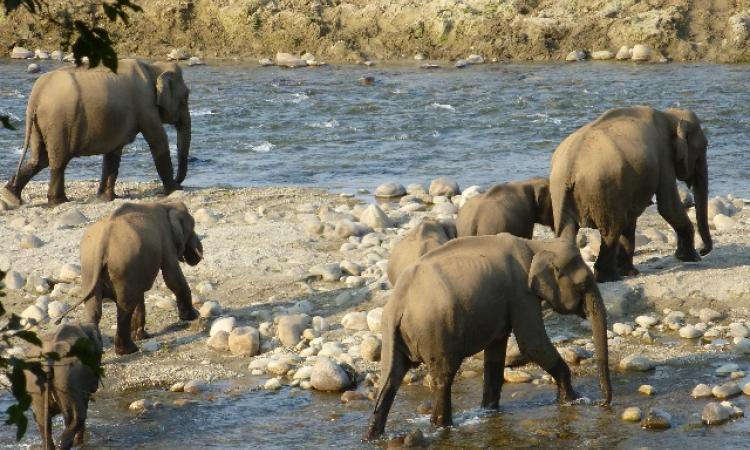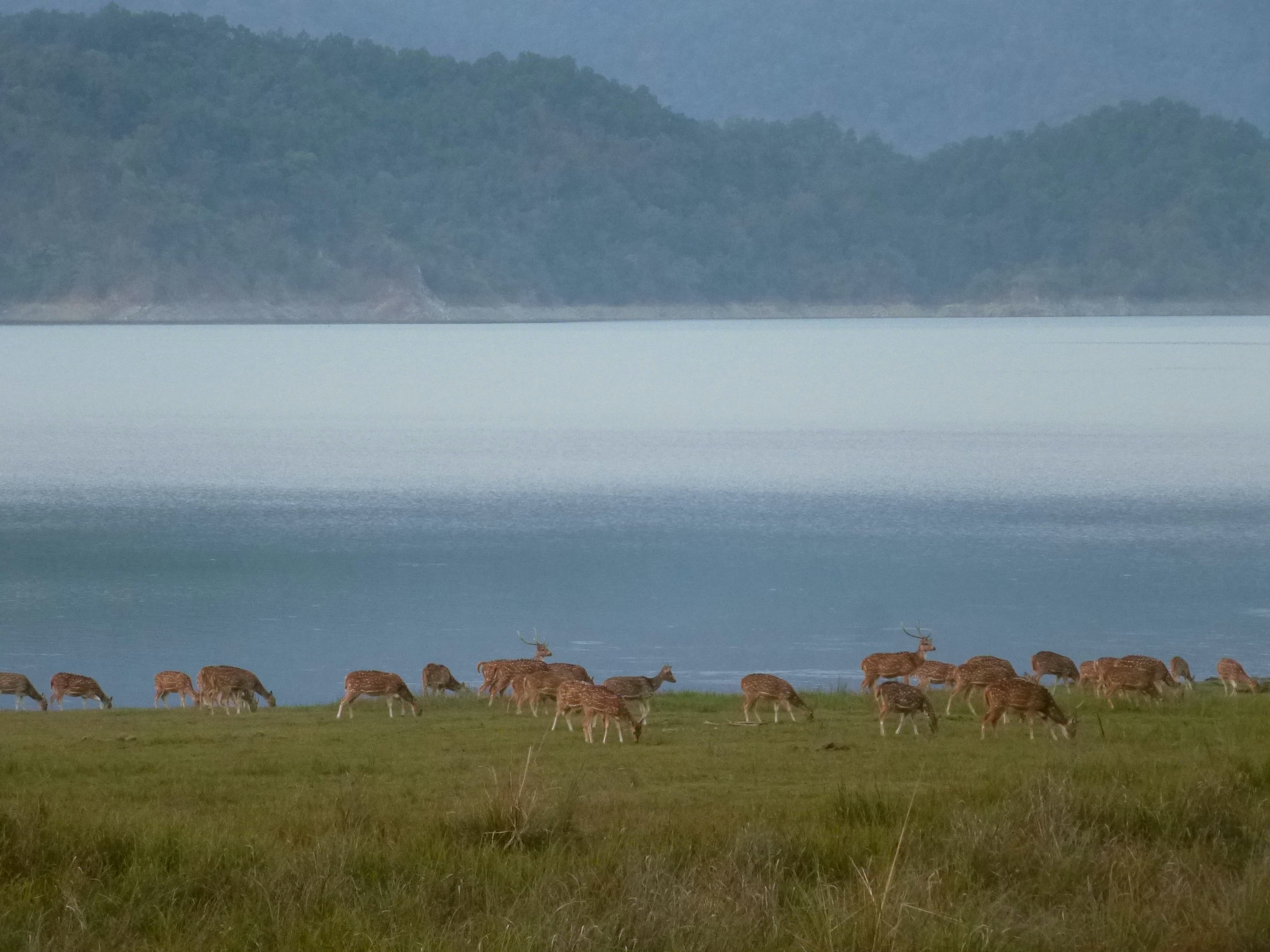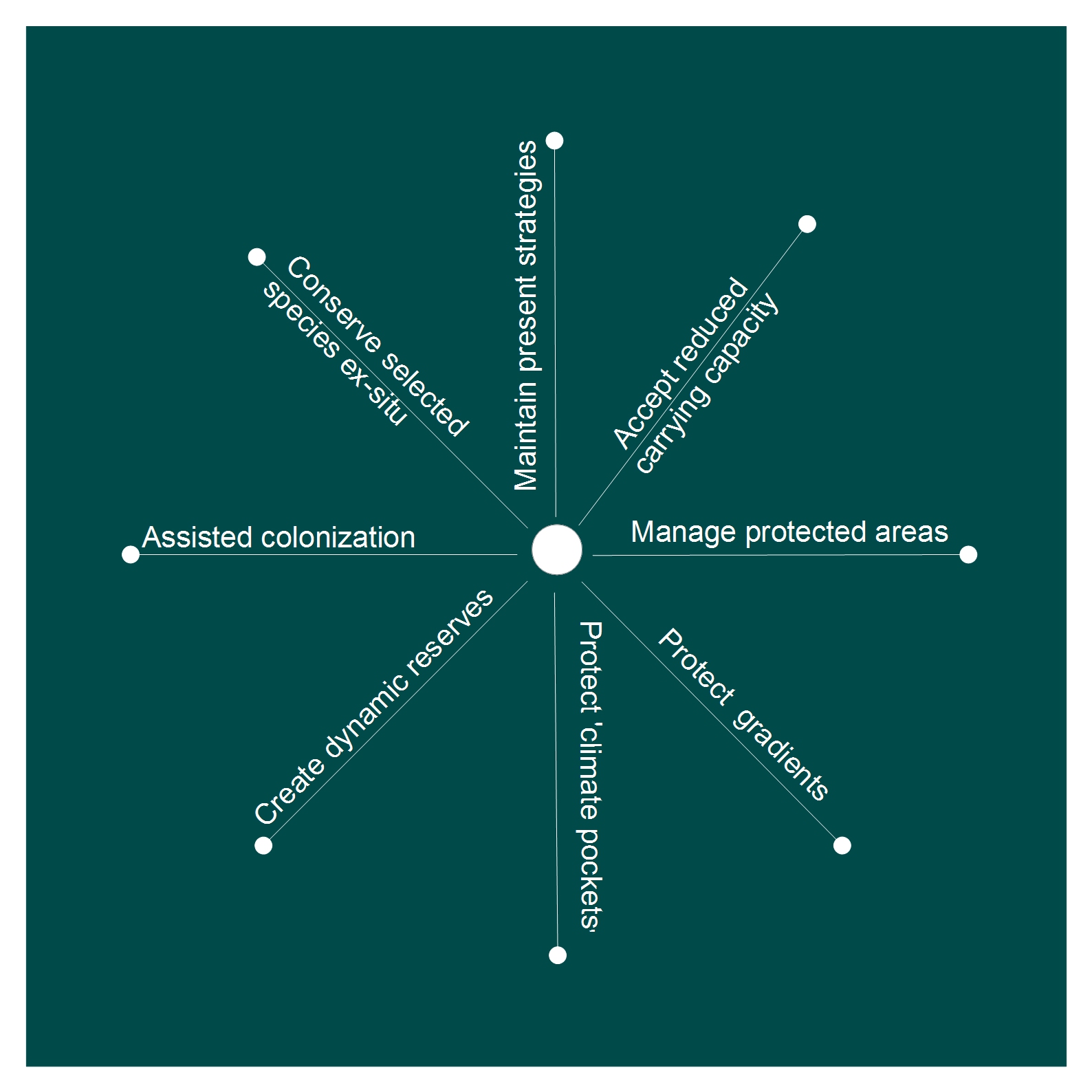
Forest guards in India have fought many things over time in the course of their daily work--poachers, irate citizens, even animals at times! But they are now facing a threat that may well be beyond their capacity to overcome. A threat that is not just responsible for the death of individual animals, but for the destruction of entire groups of species--climate change. Discussions at COP 21 have confirmed that climate change is responsible for irrevocable changes to biomes, as interlinked systems of plants and animals that are adapted to a particular environment are called.
What does this mean for India's national parks?
India is extremely bio-diverse with biomes ranging from tropical forests to high altitude cold deserts. Its national parks reflect this with each of these ecosystems being represented by at least one park.
And nearly all of them face damage due to climate change in the form of an increase in invasives, loss of vulnerable species, and changes in species composition. In a few cases, the biome as a whole faces extinction. The slides below show what is likely happen to each of India's biomes.
The water connect
Unsurprisingly, water is a common thread running through the vulnerabilities of all the national parks. We already have evidence that rainfall is occurring in a few intense bursts rather than being spread over several rains. This means that there is reduced opportunity for water to infiltrate the soil; most of it will take the form of runoff. This single change will impact nearly every biome.
Temperate forests in the Himalayas will be subject even more to extreme events like landslides. Drier areas such as deserts and shrublands will have a smaller store of water to rely on in the non-monsoon period and will face extended water stress. These areas along with deciduous forests and dry grasslands will have a longer dry period when they are vulnerable to forest fires. Mangroves and coral reefs will face increased sedimentation which may kill off fragile species like corals.
A less certain change is in the quantum of precipitation. However, several models indicate that the West Asian shrublands and deserts are becoming drier, with catastrophic results for already water-stressed species. A decrease in rainfall is the single biggest danger to flooded grasslands and wetlands, threatening to wipe them out of existence altogether. Drier monsoons are also bad news for other forests including mangroves, as they result in lower productivity and regeneration. It doesn't end there. Rising sea levels threaten to inundate shores, coral reefs and mangroves, quite literally condemning them to a watery grave.
Challenges and possible solutions
Climate change has already begun to have negative impacts on ecosystems. This degradation of forests and other biomes means that they now trap less atmospheric carbondioxide than they used to. This serves to further contribute to climate change, thus trapping us in a vicious cycle.
Biomes have been protected in static reserves which are demarcated portions of land, but these lands are now changing their very nature. For example, mangrove conservation in the Sunderbans has been achieved by declaring the area a national park. However, with the projected flooding due to climate change, the reserved space is no longer a safe refuge for mangrove forests and their associated species.
Traditional conservation techniques need to be thoughtfully adopted to allow biomes climate change adaptation. This may mean increasing the level of human interventions, as in the case of grasslands. According to Dr. Mahesh Sankaran, a scientist studying climate-ecosystem interactions, grasslands are mainly threatened by the invasion of woody species caused by higher carbon dioxide levels. This invasion needs to be controlled by bush trimming or fire management.
This may mean increasing the level of human interventions, as in the case of grasslands. According to Dr. Mahesh Sankaran, a scientist studying climate-ecosystem interactions, grasslands are mainly threatened by the invasion of woody species caused by higher carbon dioxide levels. This invasion needs to be controlled by bush trimming or fire management.
Conservation may require that geomorphological features that will provide a 'climate pocket' be identified and protected in regions facing a shift in climate. Conservation areas should go across an environmental gradient (altitudinal and riparian corridors) so that species that need to shift ranges have the room to do so, though this may require protected areas to be expanded.
A radical version of this plan is the proposal for 'dynamic reserves', which are protected areas whose locations change along with the climate. While this allows for biome protection as species shift, it poses challenges in India since very little space outside currently designated protected areas is not settled in or cultivated on.
In the case of flooded grasslands, K.Erwin, an ecologist in Florida's wetlands recommends a pragmatic approach. He says, "We may have to manage for a reduced carrying capacity based upon those stresses modified by what we can restore or modify and how much water we think will be available." This may also be true of other biomes in a region like South Asia where land is as much a scarce resource as water.
M.O. Anand, et al, maintain that agro-ecoystems and wildlife refuges need not be exclusive. While pointing out the value of patches of forest in human-modified landscapes, they recommend developing partnerships with landowners to effect conservation and minimise species loss.
Assisted colonisation is a bridge between 'in-situ' and 'ex-situ' conservation where species are moved from locations where the conditions are no longer suitable for them and introduced into new areas. This is risky as the newly introduced species may damage existing and equally valuable ecosystems. The last-ditch solution is a wholly ex-situ approach, where groups of species are housed in controlled environments, namely zoos.
Emmanuel Theophilius, an ecologist who studies Himalayan aquatic ecosystems, pointed out that 'ex-situ' conservation can, at best, allow for the continuance of hand-picked species in a wholly artificial setting. He says, "I don't understand the logic of ex-situ conservation in the context of aquatic ecosystems. It makes no sense to me. Normally one hears this to justify 'fisheries', as in the case of the Mahseer and dam impoundments. My question then is, what is the point of saving species ex-situ, while at the same time decimating the in-situ? Where can such a strategy ever lead? I know this is saying the obvious, but what can one say other than let rivers flow free and alive."
Collective actions today are reducing the planet's resilience to climate induced changes. While discussing the long term impacts of climate change on coral reefs, Huegh Goldberg, Director of the Global Change Institute, pointed out that since the nineties we have already lost 30% of our reefs to over-exploitation and pollution. This needs to be addressed immediately if reefs are to survive. This is echoed by many scientists who believe that local stresses are more urgent than climate change.
We have seen here that conserving the spaces available for our ecosystems is key to ensuring that they remain resilient enough to survive climate change. If, as Dr.Sankaran predicts, climate change requires increased management of national parks, the role of the forest guards in safeguarding ecosystems not only continues, but also increases. They may not have a say in international deliberations or may be powerless to stop the bleaching of the world's coral, but if our ecosystems survive the next few centuries, it is because they have been protected in the interim by these unassuming men and women.
/articles/unnatural-world-national-parks-and-climate-change